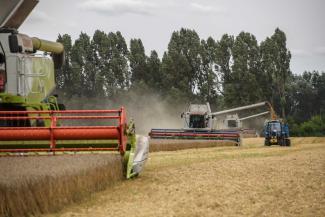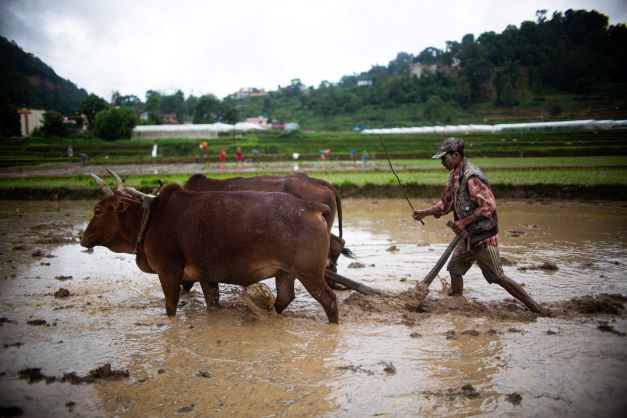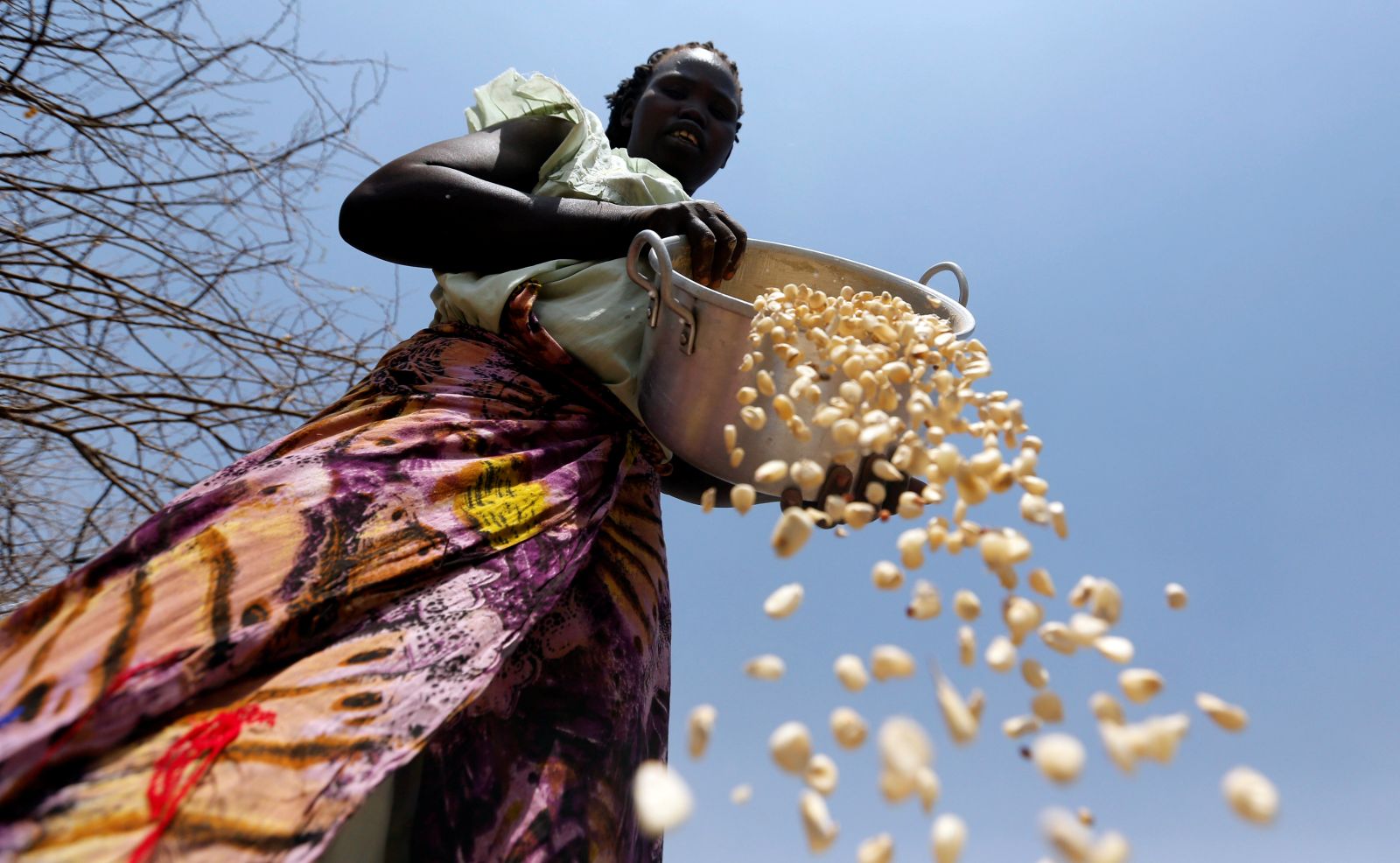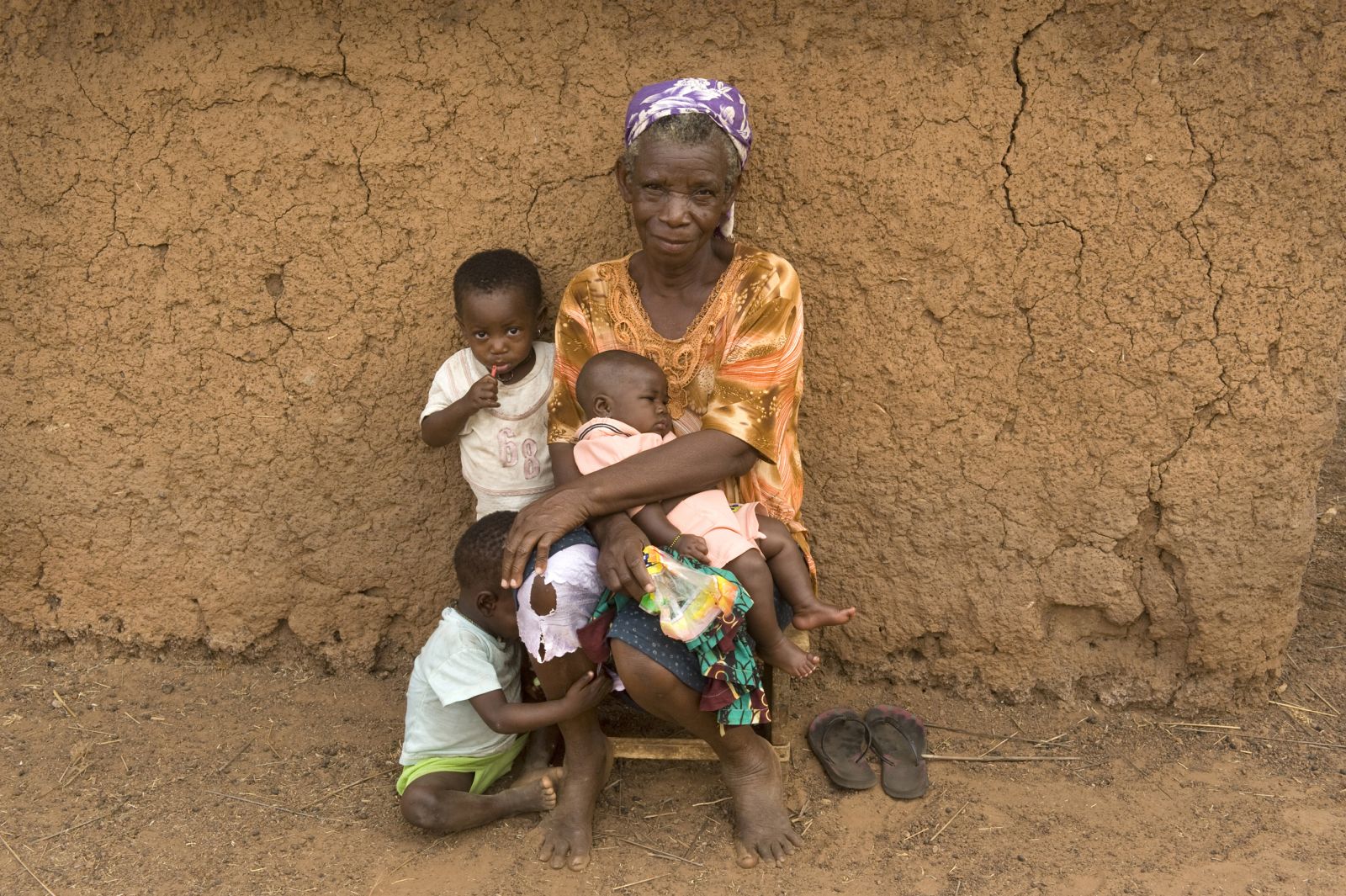Food prices
Number of starving people worldwide is again on the rise

After around two years of coronavirus pandemic, the monthly food price index published by the UN Food and Agriculture Organization (FAO) showed a year-on-year surge of more than 30 % at the end of 2021. This came after nearly ten years of relatively stable prices. The FAO index is based on the international prices of meat, dairy, cereals, sugar and vegetable oils. While rice and sugar prices showed only a moderate rise, the price of vegetable oils doubled.
As a result, even households in countries that are not so dependent on world prices faced higher food bills in 2021. In the Global South especially, people cut their food intake and did without fresh foods such as fruit and vegetables. Few countries could afford to offer “bread subsidies” or social-protection programmes to cushion the impact of the high prices. Developing countries in particular had no resources for such support because their budgets were severely strained by the economic impacts of the pandemic, rising national debt and a weakening currency.
Speculators’ high profit expectations
On top of what was already a global food price crisis, Russia’s war of aggression against Ukraine triggered a surge in prices – especially for wheat – that dwarfed those seen in the 2006 food crisis in terms of both price spikes and volatility. Within days, the price of wheat – which was already high – rose by 50 %.
The international financial markets were partly responsible for that. Anticipating high profits, investors, led by index funds, deployed massive amounts of capital, speculating on trade deals for the 2022 summer harvest and betting on lower grain exports from the Black Sea region, the investigative news platform Lighthouse Reports revealed. In May 2022, Russia’s war of aggression with port blockades pushed the price of a metric ton of wheat to a record of € 438 (2019: € 175).
The massive volatility of prices on the wheat exchange and the large number of financial transactions by a small number of players do not alone explain the rise in prices across the entire food range. But the above-average number of speculative transactions keeps the world-market wheat price high. Both the US and the EU actually have ‘position limit’ rules that are designed to restrict speculation in food markets. However, they have not been applied by regulators – evidence of the extent to which the financial sector has successfully undermined the instrument of “market regulation”.
The irony – and it has been so since the start of the price surge in 2020 – is that there is no evidence of the most plausible reason for an increase in prices, namely a failure of world wheat harvests, neither before nor after the start of the war. 2021 harvest volumes were not much lower than in previous years and the 2022 harvests, which are now almost complete, are expected to stay at the same level.
Supply on export markets – with the exception of vegetable oils – is also stable. After Russia and Ukraine signed the UN agreement in Istanbul, that was even true of wheat. At the end of October, however, Russia cancelled that agreement. What price impact that will have internationally is hard to predict. The fact that price of wheat and other grains hardly responded to good harvests in recent weeks is related to speculators’ expectation that Russia might return to weaponising supply shortages.
Calamitous coupling of energy and food prices
Another reason why the price of cereals and other foodstuffs, such as meat, dairy products, sugar and vegetable oils, started rising well before Russia’s act of aggression is that food producers are so dependent on the price of energy (Kirikkaleli et al., 2021).
Half of the costs of growing wheat
Expenditures on fuel for vehicles and machinery and on energy for the manufacture of agricultural inputs such as feed, fertilisers and plant-protection products generally account for almost half the cost of growing wheat. And that is without the energy required for transport, storage and processing – into flour, for example, which additionally reduces the volume of wheat by almost 25-30 %. So grain, meat and dairy prices depend on the price of energy.
This dependence keeps growing as industrial intensive farming spreads and is very much in the interest of big agribusiness, which invariably has the same answers for boosting yields: more agrochemicals and pesticides on fields, bigger machines and even more shipments across the world’s oceans. Judged by the multinationals’ earnings, the system works perfectly well, especially when fossil fuels are available at low cost. The cost of damage to soils, biodiversity and the climate is not shouldered by the polluters but by the community.
Until fossil fuels are completely phased-out to protect the earth’s climate, gas and oil prices are likely to remain high, so there is a growing urgency to address the question of a radical restructuring of food systems. Voices in the Global South calling for a reversal or a radical reduction of their own food supply’s dependence on the global roulette of industrial agriculture are growing louder and louder. The escalation of the grain and vegetable oil price crisis due to Russia’s war on Ukraine has thus also revealed many countries’ reliance on food imports.
Reducing dependence on imports
However, when listing the countries dependent on Ukrainian or Russian wheat, care should be taken to consider not just the degree of import dependency but also actual volumes of imports. The percentage of daily calorie intake accounted for by wheat products is a better indicator for that. Niger and Egypt, for example, have a roughly equal dependence on wheat imports (90 %) via the Black Sea. However, wheat products in Egypt account for a third of daily calorie intake, whereas in Niger they account for just one percent.
Nevertheless, the main medium-term response to the crisis for most countries must be to increase their own food production and become less dependent on imports. Respecting the human right to adequate food – a sufficient, healthy, balanced nutrition – is an obligation for every individual country and for the international community. The increase in the number of people suffering acute hunger due to the food price crisis, the failure to reduce the high number of people who are chronically hungry and the fact that 2.3 billion people cannot afford healthy food remain a scandalous violation of human rights.
Since 70-80 % of total food production still comes from family farms, it is crucial to recognise that those farms have a key role to play in eradicating hunger, reducing import dependency and lowering food prices.However, the campaign against import dependency, as now propagated by developing country governments, international donors like Germany’s Federal Ministry for Economic Cooperation and Development (BMZ) and the World Bank, must not lead to greater dependence on imported hybrid seed, chemical fertilisers or pesticides. This would replace one form of fossil fuel dependence (food) with another (inputs).
And – mindful of the ban now lifted in Kenya under pressure from the US and its agribusiness corporations – there must definitely be no policy to make development funding and aid shipments dependent on acceptance of genetically modified seed, which locks farming into the industrial agricultural model.
References
The Hunger Profiteers, Lighthouse Reports 2022:
https://www.lighthousereports.nl/investigation/the-hunger-profiteers/
Kirikkaleli, D., Darbaz, I., 2021: The Causal Linkage between Energy Price and Food Price. Energies 2021 14, 4182.
https://www.mdpi.com/1996-1073/14/14/4182
Francisco Marí is a consultant on global nutrition, agricultural trade and maritime policy at Brot für die Welt (Bread for the World).
francisco.mari@brot-fuer-die-welt.de












